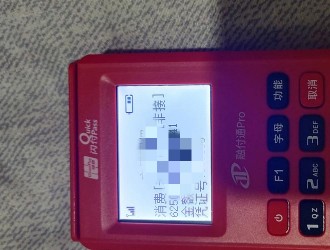网上有很多关于at账户是pos机吗,NLTK 是不是机器学习必备库的知识,也有很多人为大家解答关于at账户是pos机吗的问题,今天pos机之家(www.poszjia.com)为大家整理了关于这方面的知识,让我们一起来看下吧!
本文目录一览:
at账户是pos机吗
什么是NLTK?自然语言工具包(Natural Language Toolkit,简称NLTK)是一个Python库,用于处理和分析自然语言数据。NLTK包含了各种工具,包括文本处理、词性标注、分词、语法分析、语义分析、情感分析等,可以帮助我们更好地理解和分析自然语言数据。
NLTK的安装和使用在使用NLTK之前,我们需要安装NLTK库和相关数据。我们可以使用以下命令安装NLTK:
pip install nltk
安装完成后,我们需要下载NLTK的数据。可以使用以下代码下载所有数据:
import nltknltk.download('all')
或者,我们也可以只下载需要的数据。例如,使用以下代码下载英文停用词(stopwords):
import nltknltk.download('stopwords')
在下载完毕后,我们就可以开始使用NLTK库了。在使用NLTK库时,我们需要先导入NLTK库和需要使用的模块。例如,使用以下代码导入NLTK库和词性标注模块:
import nltkfrom nltk import pos_tag常用的NLTK API
在NLTK库中,常用的API包括:
分词(Tokenization):将文本分成单个的词或标记。常用的函数包括nltk.tokenize.word_tokenize和nltk.tokenize.sent_tokenize。其中,word_tokenize函数将文本分成单个的词,sent_tokenize函数将文本分成句子。import nltktext = "This is a sample sentence. It contains multiple sentences."words = nltk.tokenize.word_tokenize(text)sentences = nltk.tokenize.sent_tokenize(text)print(words)print(sentences)
输出结果:
['This', 'is', 'a', 'sample', 'sentence', '.', 'It', 'contains', 'multiple', 'sentences', '.']['This is a sample sentence.', 'It contains multiple sentences.']词性标注(Part-of-Speech Tagging):将文本中的每个单词标注为其词性。常用的函数包括nltk.pos_tag。
import nltktext = "This is a sample sentence."words = nltk.tokenize.word_tokenize(text)tags = nltk.pos_tag(words)print(tags)
输出结果:
[('This', 'DT'), ('is', 'VBZ'), ('a', 'DT'), ('sample', 'JJ'), ('sentence', 'NN'), ('.', '.')]
在输出结果中,每个单词都被标注了其词性。
停用词(Stopwords):在自然语言处理中,停用词是指在处理文本时被忽略的常见词汇(例如“the”、“and”、“a”等)。常用的停用词列表可以通过nltk.corpus.stopwords.words函数获取。import nltkstopwords = nltk.corpus.stopwords.words('english')print(stopwords)
输出结果:
['i', 'me', 'my', 'myself', 'we', 'our', 'ours', 'ourselves', 'you', 'your', 'yours', 'yourself', 'yourselves', 'he', 'him', 'his', 'himself', 'she', 'her', 'hers', 'herself', 'it', 'its', 'itself', 'they', 'them', 'their', 'theirs', 'themselves', 'what', 'which', 'who', 'whom', 'this', 'that', 'these', 'those', 'am', 'is', 'are', 'was', 'were', 'be', 'been', 'being', 'have', 'has', 'had', 'having', 'do', 'does', 'did', 'doing', 'a', 'an', 'the', 'and', 'but', 'if', 'or', 'because', 'as', 'until', 'while', 'of', 'at', 'by', 'for', 'with', 'about', 'against', 'between', 'into', 'through', 'during', 'before', 'after', 'above', 'below', 'to', 'from', 'up', 'down', 'in', 'out', 'on', 'off', 'over', 'under', 'again', 'further', 'then', 'once', 'here', 'there', 'when', 'where', 'why', 'how', 'all', 'any', 'both', 'each', 'few', 'more', 'most', 'other', 'some', 'such', 'no', 'nor', 'not', 'only', 'own', 'same', 'so', 'than', 'too', 'very', 's', 't', 'can', 'will', 'just', 'don', 'should', 'now']
在输出结果中,我们可以看到常用的英文停用词列表。
词干提取(Stemming):将单词转换为其基本形式,例如将“running”转换为“run”。常用的词干提取器包括Porter词干提取器和Snowball词干提取器。import nltkporter_stemmer = nltk.stem.PorterStemmer()snowball_stemmer = nltk.stem.SnowballStemmer('english')word = 'running'porter_stem = porter_stemmer.stem(word)snowball_stem = snowball_stemmer.stem(word)print(porter_stem)print(snowball_stem)
输出结果:
runrun
在上面的代码中,我们分别使用Porter词干提取器和Snowball词干提取器将单词“running”转换为其基本形式“run”。
词形还原(Lemmatization):将单词转换为其基本形式,并考虑其上下文和词性。例如,将“went”转换为“go”,将“was”转换为“be”。常用的词形还原器包括WordNet词形还原器。import nltkwn_lemmatizer = nltk.stem.WordNetLemmatizer()word = 'went'wn_lemma = wn_lemmatizer.lemmatize(word, 'v')print(wn_lemma)
输出结果:
go
在上面的代码中,我们使用WordNet词形还原器将单词“went”转换为其基本形式“go”。
文本分类器(Text Classification):使用机器学习算法将文本分类到不同的类别中。NLTK库提供了多种文本分类器,包括朴素贝叶斯分类器、决策树分类器、最大熵分类器等。import nltk# 准备数据documents = [ ('This is the first document.', 'positive'), ('This is the second document.', 'positive'), ('This is the third document.', 'negative'), ('This is the fourth document.', 'negative'),]# 特征提取all_words = set(word for doc in documents for word in nltk.tokenize.word_tokenize(doc[0]))features = {word: (word in nltk.tokenize.word_tokenize(doc[0])) for doc in documents for word in all_words}# 构造训练集和测试集train_set = [(features, label) for (features, label) in documents[:2]]test_set = [(features, label) for (features, label) in documents[2:]]# 训练分类器classifier = nltk.NaiveBayesClassifier.train(train_set)# 预测分类for features, label in test_set: print('{} -> {}'.format(features, classifier.classify(features)))
在上面的代码中,我们使用朴素贝叶斯分类器将文本分类为“positive”和“negative”两个类别。首先,我们准备了一些文档和它们的标签。然后,我们使用特征提取将每个单词转换为特征,并将它们与标签一起组成训练集和测试集。最后,我们使用朴素贝叶斯分类器训练模型,并使用测试集来评估模型的准确性。
语义分析(Semantic Analysis):用于理解文本的意义和语境。NLTK库提供了多种语义分析工具,包括词义消歧、命名实体识别、情感分析等。import nltk# 词义消歧from nltk.wsd import lesks1 = 'I went to the bank to deposit some money.'s2 = 'He sat on the bank of the river and watched the water flow.'print(lesk(nltk.tokenize.word_tokenize(s1), 'bank'))print(lesk(nltk.tokenize.word_tokenize(s2), 'bank'))# 命名实体识别from nltk import ne_chunktext = "Barack Obama was born in Hawaii."tags = nltk.pos_tag(nltk.tokenize.word_tokenize(text))tree = ne_chunk(tags)print(tree)# 情感分析from nltk.sentiment import SentimentIntensityAnalyzersia = SentimentIntensityAnalyzer()sentiment = sia.polarity_scores('This is a positive sentence.')print(sentiment)
在上面的代码中,我们分别使用了NLTK库中的词义消歧、命名实体识别和情感分析工具。在词义消歧中,我们使用lesk函数来判断“bank”在两个句子中的含义。在命名实体识别中,我们使用ne_chunk函数来识别文本中的命名实体。在情感分析中,我们使用SentimentIntensityAnalyzer来分析文本的情感,并返回其积极性、消极性、中性等指标。
总结以上是关于Python NLTK的详细介绍,包括NLTK的安装和使用、常用的API以及完整的代码示例。NLTK是一个功能强大的自然语言处理工具,可以帮助我们更好地处理和分析文本数据。通过学习NLTK,我们可以掌握自然语言处理的基本方法和技术,为文本数据分析和挖掘打下坚实的基础。
以上就是关于at账户是pos机吗,NLTK 是不是机器学习必备库的知识,后面我们会继续为大家整理关于at账户是pos机吗的知识,希望能够帮助到大家!









